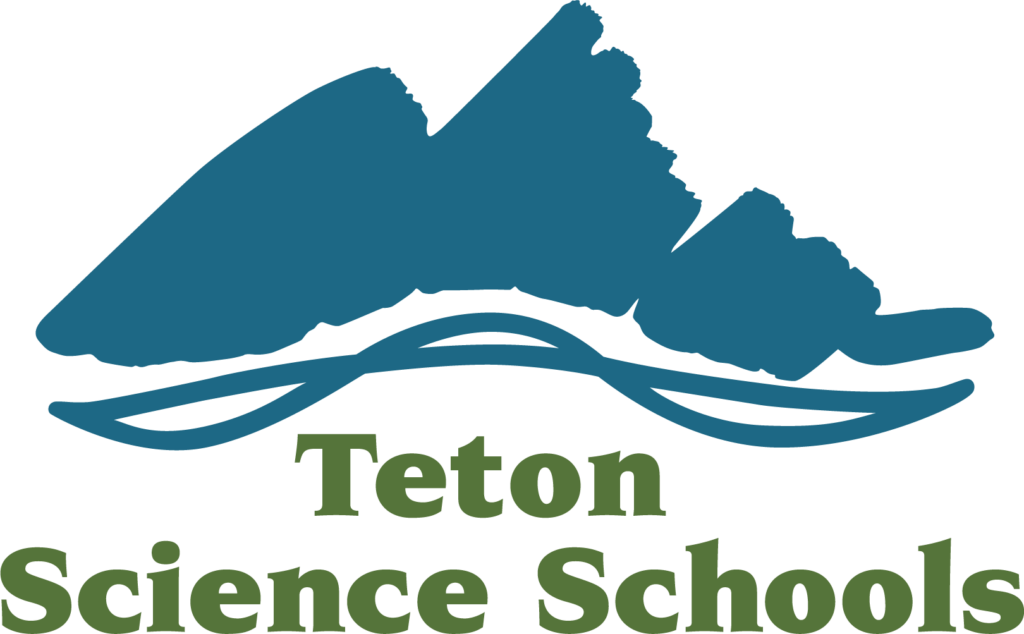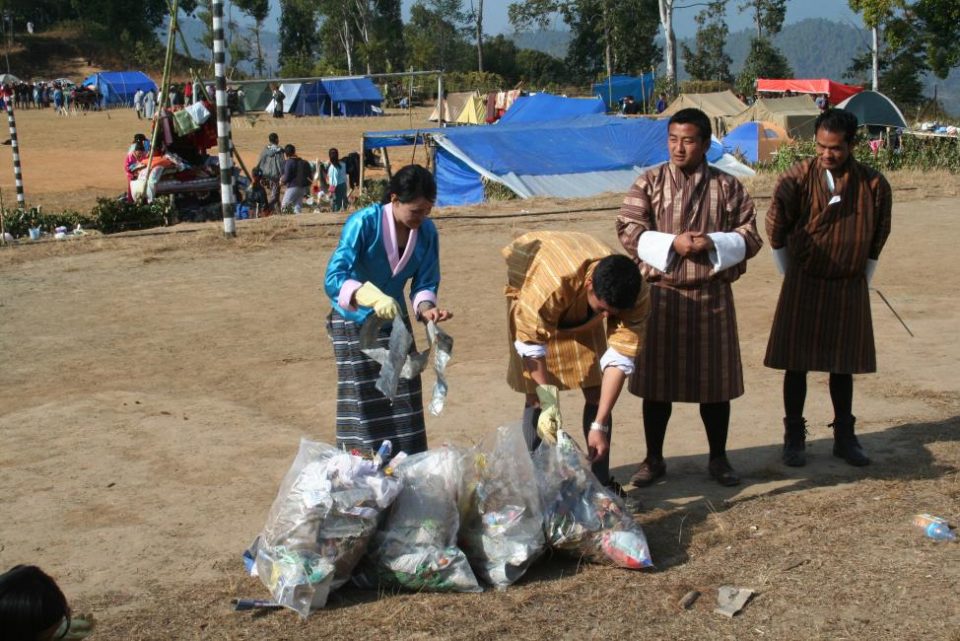 The essential questions, what is place-based education (PBE) and why is PBE important, were explored during the first half of the Damphu workshop. By day five, participants asked questions around how to integrate PBE into the existing curriculum and the feasibility of doing so, and how PBE is different from what they are already doing. Although we began exploring the ‘how’ of utilizing place as a context for learning, it was time to dive in deeper and model lessons from the Bhutanese curriculum that integrated place.Leslie facilitated a lesson on watersheds from the class 6 social studies curriculum. The 5 E Model of engage, explore, explain, elaborate and evaluation (optional: extension) was used to frame this activity. Using maps of Bhutan and yarn, participants traced the four major rivers in Bhutan (Manas Chhu, Puna Tsang Chhu, Wang Chhu and Amo Chhu), and outlined their watersheds. After rich discussions, participants used the school campus to examine what forms a river and determines its course and flow. If time had permitted, participants would have extended this activity by building their own watersheds out of dirt or sand.Using information from a study by Sonam Wangyel Wang (2008) on predator and prey relationships in Jigme Singye Wangchuck National Park, I conducted a lesson on the ecology of populations from the class 6 science curriculum. Participants were either a leopard (Panthera pardus), tiger (Panthera tigris), or dhole/wild dog (Cuon alpinus), and they had to hunt their prey, which included sambar deer (Cervus unicolor), livestock, muntjac/barking deer (Muntiacus muntjak), Grey Languar (Trachypithecus geei) and wild boar (Sus scrofa). After each round various factors effected population size, including lack of food, disease, injury, human-animal conflict, deforestation and birth. The activity demonstrated and provoked discussions and understandings on predator-prey relationships, carrying capacity, inter-specific and intra-specific competition and limiting factors of population size.For two days, we all acted like students as pairs of teachers taught lessons from their existing social studies, science, language arts and English curriculum utilizing a PBE approach. We collected trash around the school grounds and separated it into biodegradable and degradable waste. An extension to the lesson would involve students making art out of the waste. In addition to achieving curriculum goals, this lesson can support waste management awareness in schools with emphasis on the four R’s (refuse, reduce, reuse and recycle). During an English lesson we focused on completing and using a semantic web on a local tree, such as white Champa, to write paragraphs and poems.In the school chemistry lab, guided inquiry was used for scientific investigations of various chemical changes. These were then compared to physical changes in the local ecosystem. Another science lesson brought us out into the mixed forest and orange orchard looking for nitrogen (N), phosphorous (P) and potassium (K) deficiencies in plants. Other science lessons included dissecting a flower and using a dichotomous key to identify the stamen, pistil, petal and sepal; identifying five local birds of Bhutan; and classifying plants based on their natural adaptation, in which we found orchids (epiphyte), Chir Pine (Pinus roxburghii) (mesophytes) and algae (hydrophytes).Through these engaging and hands-on lessons, teachers walked away with an understanding of how to take the theory of PBE and apply it. Participants experienced and understand how the practice of PBE enriches their existing Bhutanese curriculum.
The essential questions, what is place-based education (PBE) and why is PBE important, were explored during the first half of the Damphu workshop. By day five, participants asked questions around how to integrate PBE into the existing curriculum and the feasibility of doing so, and how PBE is different from what they are already doing. Although we began exploring the ‘how’ of utilizing place as a context for learning, it was time to dive in deeper and model lessons from the Bhutanese curriculum that integrated place.Leslie facilitated a lesson on watersheds from the class 6 social studies curriculum. The 5 E Model of engage, explore, explain, elaborate and evaluation (optional: extension) was used to frame this activity. Using maps of Bhutan and yarn, participants traced the four major rivers in Bhutan (Manas Chhu, Puna Tsang Chhu, Wang Chhu and Amo Chhu), and outlined their watersheds. After rich discussions, participants used the school campus to examine what forms a river and determines its course and flow. If time had permitted, participants would have extended this activity by building their own watersheds out of dirt or sand.Using information from a study by Sonam Wangyel Wang (2008) on predator and prey relationships in Jigme Singye Wangchuck National Park, I conducted a lesson on the ecology of populations from the class 6 science curriculum. Participants were either a leopard (Panthera pardus), tiger (Panthera tigris), or dhole/wild dog (Cuon alpinus), and they had to hunt their prey, which included sambar deer (Cervus unicolor), livestock, muntjac/barking deer (Muntiacus muntjak), Grey Languar (Trachypithecus geei) and wild boar (Sus scrofa). After each round various factors effected population size, including lack of food, disease, injury, human-animal conflict, deforestation and birth. The activity demonstrated and provoked discussions and understandings on predator-prey relationships, carrying capacity, inter-specific and intra-specific competition and limiting factors of population size.For two days, we all acted like students as pairs of teachers taught lessons from their existing social studies, science, language arts and English curriculum utilizing a PBE approach. We collected trash around the school grounds and separated it into biodegradable and degradable waste. An extension to the lesson would involve students making art out of the waste. In addition to achieving curriculum goals, this lesson can support waste management awareness in schools with emphasis on the four R’s (refuse, reduce, reuse and recycle). During an English lesson we focused on completing and using a semantic web on a local tree, such as white Champa, to write paragraphs and poems.In the school chemistry lab, guided inquiry was used for scientific investigations of various chemical changes. These were then compared to physical changes in the local ecosystem. Another science lesson brought us out into the mixed forest and orange orchard looking for nitrogen (N), phosphorous (P) and potassium (K) deficiencies in plants. Other science lessons included dissecting a flower and using a dichotomous key to identify the stamen, pistil, petal and sepal; identifying five local birds of Bhutan; and classifying plants based on their natural adaptation, in which we found orchids (epiphyte), Chir Pine (Pinus roxburghii) (mesophytes) and algae (hydrophytes).Through these engaging and hands-on lessons, teachers walked away with an understanding of how to take the theory of PBE and apply it. Participants experienced and understand how the practice of PBE enriches their existing Bhutanese curriculum.


